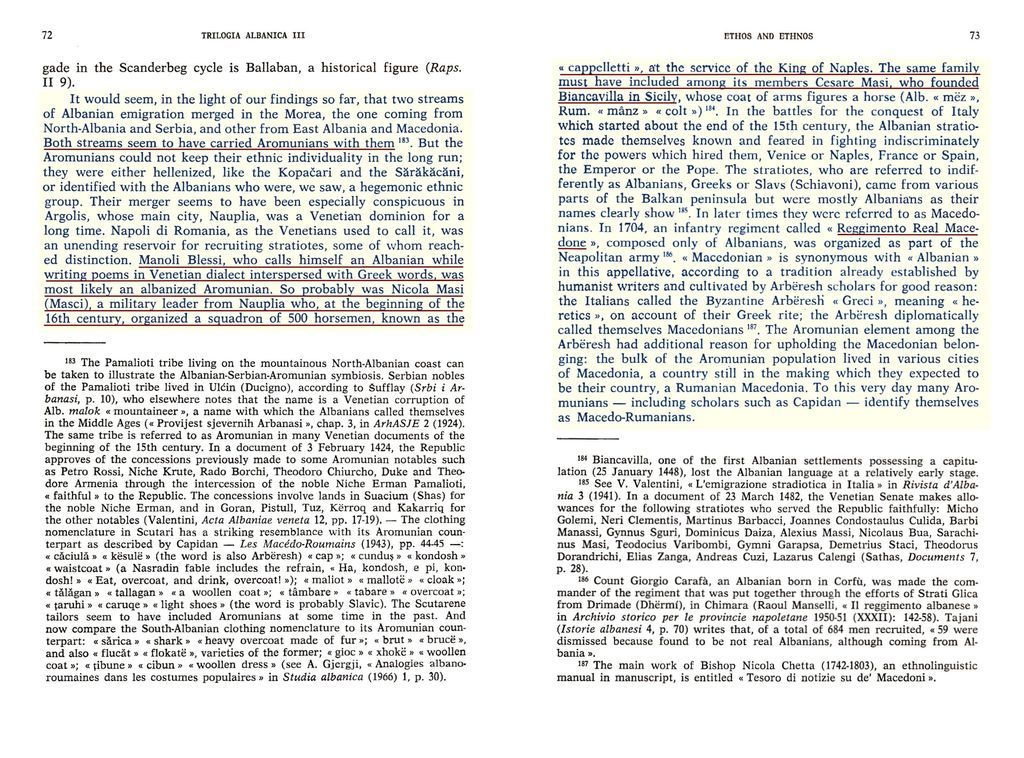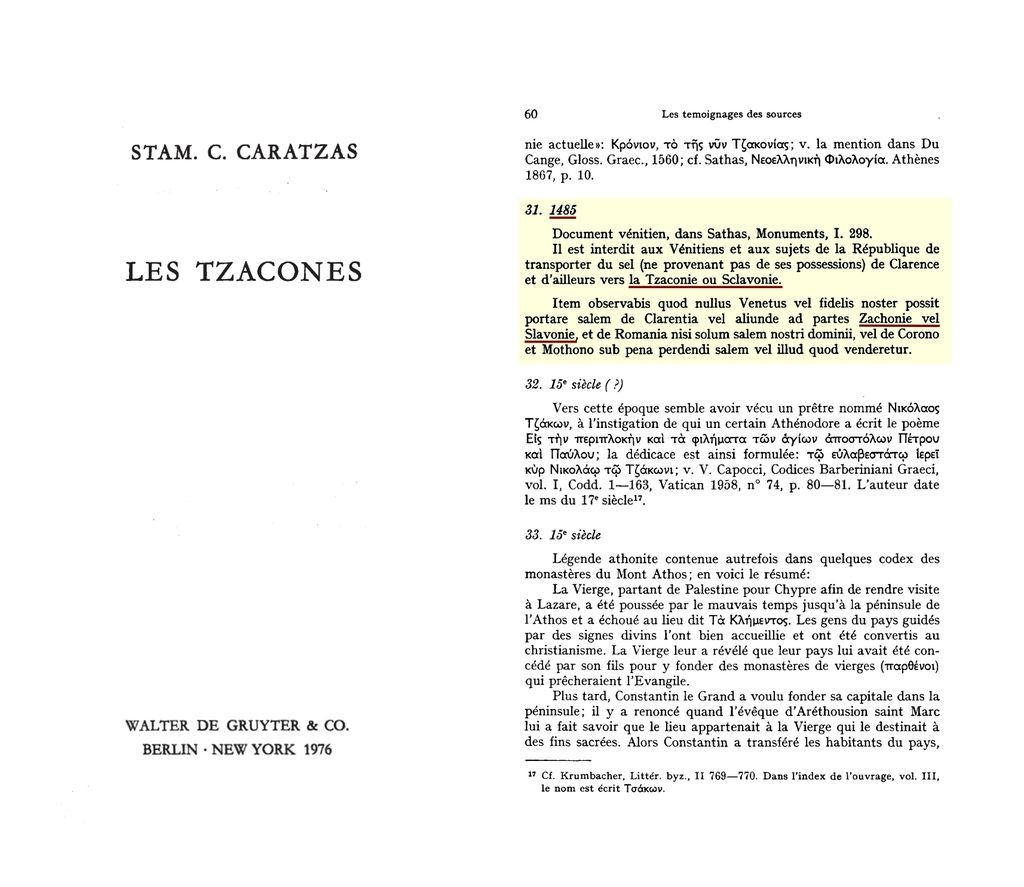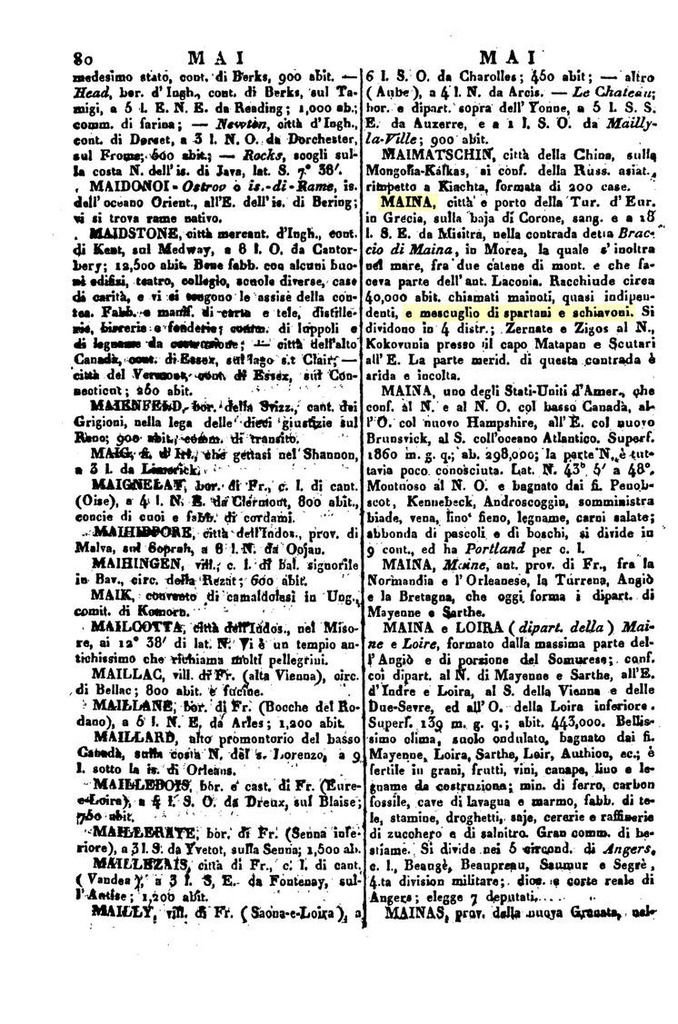Originally posted by Carlin
View Post
The Real Ethnic Composition of Modern Greece
Collapse
X
-
Here are the quotes from Charanis (which I do not endorse):Originally posted by tchaiku View PostHow so? Can you explain in details?
- "The Laconians were the particular group of Greek speakers, the inhabitants of the mountain regions of eastern Peloponnese, often referred to by late Byzantine writers also as Tsacones and whose origin was associated with the invasion of the peninsula by the Slavs. The Peloponnesians must be identified with the general Greek speaking populations found throughout the empire, numerically the strongest element of its population as a whole, the Romaioi of the Byzantine texts."
- "To what extent the Greek speakers of the Peloponnese represented the old native stock is a question which is, of course, most difficult, if not impossible to answer, but there can be no doubt that they included the remnants of that stock."
Would you be able to provide the citation from Isidore of Kiev regarding the barbaric Laconians?Last edited by Carlin; 04-23-2017, 07:26 PM.
Comment
-
-
What was the scale and impact of Roman colonization and immigration into Peloponnese & Greece? I am usually told, and hear, that the impact was minimal and that the number of colonists was not large (and that those who arrived were almost immediately hellenized).
Processes of Cultural Change and Integration in the Roman World
Processes of Cultural Change and Integration in the Roman World is a collection of studies on the interaction between Rome and the peoples that became part of its Empire between c. 300 BC and AD 300. The book focuses on the mechanisms by which interaction between Rome and its subjects occurred, e.g. the settlements of colonies by the Romans, army service, economic and cultural interaction. In many cases Rome exploited the economic resources of the conquered territories without allowing the local inhabitants any legal autonomy. However, they usually maintained a great deal of cultural freedom of expression. Those local inhabitants who chose to engage with Rome, its economy and culture, could rise to great heights in the administration of the Empire.
Page 154: This paper presents the results of such context-specific case study. It focuses on the city of Patras, which was colonized by Augustus in 14 B.C. Colonization entailed a massive influx of foreigners into the city, among them a large number of Roman army veterans.
Page 156: The colonization of Patras took place in the context of the reorganization of Greece that was started by Caesar and continued by Augustus.
Page 158: The settlement of veterans from Antony's legions after the battle of Actium must have posed a serious problem for Augustus, since, according to some estimations, there were about 35,000 veterans who had to be accommodated; Patras was just one destination for the veterans. ...... A third wave of immigration has been suggested by Keppie and Rizakis ........ The process of large-scale immigration entailed major disruptions to local society. In the case of Patras the act of colonization and the immigration of thousands of colonists led to a radical overthrow of the established order of things.
Who were then the medieval Romaioi and Tsacones of Peloponnese?
Comment
-
-
The History of Leo the Deacon: Byzantine Military Expansion in the Tenth Century, by Leo (the Deacon)
Leo's firsthand experience of the campaigns and courts of two Byzantine emperors provides vivid descriptions of sieges, pitched battles, and ambushes. His account of the conspiracy against Nikephoros II Phokas, murdered as he slept on the floor in front of his icons, is one of the most dramatic in Byzantine narrative histories. Alice-Mary Talbot and Denis F. Sullivan, with the assistance of George T. Dennis and Stamatina McGrath, include an extensive introduction and detailed notes to guide the reader through the complex chronology, geography, and text of the History. Also included are five maps, two genealogical tables, and four indexes.
Page 46 -
At II:8 Leo says that Phokas settled Crete after its conquest with "bands of Armenians, Romans, and other rabble," reflecting the policy of providing plots of land to soldiers in return for the obligation of military service.
The quote can also be found here Leonis diaconi Caloënsis Historia libri decem: et liber de Velitatione ...
Interesting how in the Latin translation it states: ...contuberniis Armeniorum, Romanorum, convenarum hominum eo in coloniam deductis...
Comment
-
-
No, unfortunately I cannot find any reference of him.Originally posted by Carlin View PostWould you be able to provide the citation from Isidore of Kiev regarding the barbaric Laconians?
So what are your thoughts on Tsakones?
Barbaric could mean many things.Last edited by tchaiku; 04-24-2017, 09:21 AM.
Comment
-
-
Actually the "vulgarisms" Mazaris presents (piason ta, doson ta, erhontissan, kathezoutisan, elade, aetitiosen etc) are totally Greek and quite... archaic. Not as archaic as the language he uses, but certainly more archaic than the demotic Greek language of that time, or present-day. That makes it clearer that Laconians/Tzaconians are not related to any foreign entity (Slavs, Vlachs, Italians or Albanians).Originally posted by tchaiku View PostΜάζαρις (Mazaris) :
«Δέδοικα ουν ίνα μη γένωμαι και αυτός διατρίβων εν Σπάρτη ώσπερ εν τη Κωνσταντίνου γέγονεν ο Πελοποννήσιος εκείνος, Συναδινός ο Κορμέας, ή ίνα μη βαρβαρωθώ και αυτός ώσπερ άρα βεβαρβάρωνταί γε οι Λάκωνες, και νυν κέκληνται Τζάκωνες, και πιάσον τα και σφίξον τα, και δώσον τα, και ήμενον, και ηρχόντησαν, και καθεζούτησαν, και έλαδε, πα, και αιτιτοίωσέν (ετετοίωσέν) τον, και άλλ’ άττα βάρβαρα λέγουσιν» [Μάζαρις 1831, 164 και Μάζαρις 1860, 230].
By the way this was written in 1410s not in the 1800s.
Comment
-
-
Tchaiku, thanks for your question. I will reply soon.Originally posted by tchaiku View Post
In the meantime, I wanted to post this (unrelated to your question above, the author is Arsi Pipa) -

[ Note that the Italians called the Byzantine Arberesh Greci? So, WHO are then the Greci / Greeks? Isn't this a contradiction? ]
Last edited by Carlin; 04-24-2017, 11:25 PM.
]
Last edited by Carlin; 04-24-2017, 11:25 PM.
Comment
-
-
ZACHONIE VEL SLAVONIEOriginally posted by Amphipolis View PostActually the "vulgarisms" Mazaris presents (piason ta, doson ta, erhontissan, kathezoutisan, elade, aetitiosen etc) are totally Greek and quite... archaic. Not as archaic as the language he uses, but certainly more archaic than the demotic Greek language of that time, or present-day. That makes it clearer that Laconians/Tzaconians are not related to any foreign entity (Slavs, Vlachs, Italians or Albanians).
By the way this was written in 1410s not in the 1800s.

In the above-mentioned text, derived from the book "Les Tsakones" by Stamatis Caratzas, an extract from a text that was first published in the 1st volume of K. Sathas' paper has been highlighted "Documents inédits relatifs à l'histoire de la Grèce au moyen âge", that is, in exactly the same volume in which he first formulated his theory of Slavic movements. In the highlighted text it appears that the Venetians who wrote it reported in 1485 the area of Tsakonia as Slavonia (Tsakonia = Slavonia).
What is behind this? In 1464 the Venetians took control of Monemvasia and the surrounding area, which they held until 1540, although around 1500 they lost the rural area around the castle. This particular text, issued in 1485, is an order referring to the area around the castle of Monemvasia, which is again referred to Tsakonia as Slavonia. This order forbids the introduction of salt in this area from the area of Glarenza, which in 1485, when it was written, was held by the Turks.
So it is certain that K. Sathas knew the existence of such Venetian texts. And that means that it is really a mystery because he finally proceeded to formulate his theory. Even if he thought the Byzantines were not (unintentionally unwittingly) accurate in this matter, he could never assume that the Venetians were equally inaccurate in their own references.
Thoughts? Why was Tsakonia referred to as Slavonia by the Venetians in 1485?
If, like you state, the Tsakonians are not related to any foreign entity (i.e. the Slavs, in this specific case) - why is Tsakonia referred to as Slavonia?
Comment
-
-
Can you be more clear?Originally posted by Amphipolis View PostActually the "vulgarisms" Mazaris presents (piason ta, doson ta, erhontissan, kathezoutisan, elade, aetitiosen etc) are totally Greek and quite... archaic. Not as archaic as the language he uses, but certainly more archaic than the demotic Greek language of that time, or present-day. That makes it clearer that Laconians/Tzaconians are not related to any foreign entity (Slavs, Vlachs, Italians or Albanians).
Comment
-
-
Can you quote the citation in english and elaborate? The text does not directly indicate that Tsakones are Slavs, for example just as '' Slavs in Germany'' does not mean that Germans are Slavs.Originally posted by Carlin View PostZACHONIE VEL SLAVONIE

In the above-mentioned text, derived from the book "Les Tsakones" by Stamatis Caratzas, an extract from a text that was first published in the 1st volume of K. Sathas' paper has been highlighted "Documents inédits relatifs à l'histoire de la Grèce au moyen âge", that is, in exactly the same volume in which he first formulated his theory of Slavic movements. In the highlighted text it appears that the Venetians who wrote it reported in 1485 the area of Tsakonia as Slavonia (Tsakonia = Slavonia).
What is behind this? In 1464 the Venetians took control of Monemvasia and the surrounding area, which they held until 1540, although around 1500 they lost the rural area around the castle. This particular text, issued in 1485, is an order referring to the area around the castle of Monemvasia, which is again referred to Tsakonia as Slavonia. This order forbids the introduction of salt in this area from the area of Glarenza, which in 1485, when it was written, was held by the Turks.
So it is certain that K. Sathas knew the existence of such Venetian texts. And that means that it is really a mystery because he finally proceeded to formulate his theory. Even if he thought the Byzantines were not (unintentionally unwittingly) accurate in this matter, he could never assume that the Venetians were equally inaccurate in their own references.
Thoughts? Why was Tsakonia referred to as Slavonia by the Venetians in 1485?
If, like you state, the Tsakonians are not related to any foreign entity (i.e. the Slavs, in this specific case) - why is Tsakonia referred to as Slavonia?Last edited by tchaiku; 04-25-2017, 01:12 PM.
Comment
-
-
I'm sorry what is the Sathas theory?
If Tzaconia once covered all SE Peloponnese, it's clear that Tzacones were gradually limited to a small part of middle-East Peloponnese (as we can see in the famous map of 1800s). As for the area below (where Monemvasia is) it seems it was populated by other Greeks and Albanians.
As for Slavs, I'm not sure I remember where the last Slavs were located (by 1400s) or when they are last mentioned (I think Celebi didn't find any in the 1600s).
The nine phrases/verbs Mazaris mentions are in a Greek dialect, a distortion of ancient Greek, yet very close to Medieval and present-day vernacular Greek.
Comment
-
-
(Answering some of my questions myself)
(Not sure how but) William Miller believes the Slavs were two distincts groups located as follows:
-Ezerites at Elos (this is at the Laconian Gulf between the middle and right finger of Peloponnese)
-Melingi at Taygetos Mountain (this mountain covers the middle finger of Peloponnese).
Comment
-
-
I agree, but it says Tsakonia or Slavonia. As an example, if the Venetians happened to arrive and colonize Bavaria - and mention in an official document Bavaria or Slavonia (Sclavonia), what would you think? Wouldn't you think this is a reason to at least explore this a bit further, or to ask why does Bavaria=Slavonia in the eyes of the Venetians? (It doesn't mean that Germans are Slavs though.)Originally posted by tchaiku View PostCan you quote the citation in english and elaborate? The text does not directly indicate that Tsakones are Slavs, for example just as '' Slavs in Germany'' does not mean that Germans are Slavs.
The full translation of the highlighted text is:
It is forbidden to the Venetians and subjects of the Republic to transport salt ... from Glarenza/Clarence and elsewhere to Tzaconia or Sclavonia.
Comment
-
-
More ramblings on the Tzakonians/Tzakonia
I have already written/added material regarding Tzakonia and Tzakonians that can be found in these threads:
1) http://www.macedoniantruth.org/forum...read.php?t=405
2) http://www.macedoniantruth.org/forum...?t=6633&page=6
To summarize from various books and sources (I will not explicitly list the names of all the authors - all can be found in the above two threads including citations and screenshots):
- The Venetian documents mention Albanians in Tzaconia.
- The Mardaites inhabited the territory of Monemvasia, or modern Tzaconia.
- Like 'Mardaite', the word 'Tzacon' did not mean a people, but a category of soldiers.
- According to historian Sathas: the ancient Tzaconians belong to Albanian sailors of Kranidi, Hydra.
- Philippson admits that Slavic colonies existed in Vatika also, that is to say south of the fortress of Tzaconia and close to Monemvasia. Some Slavic place names reinforce this supposition.
- As per Chalkokondyles and geographer Meletios, the regions of Taygetos, land of Laconia, and promontory of Tenaron were long inhabited by Romani (that is, Vlachs / Armanoi).
- The Vlachs / Armanoi have been variously called by different writers and in different places by a variety of names: Maniati, Laconi, Bui, Megalovlahiti, Dasareti, Meteori, etc.
- Stam. C. Caratzas states that "Two indications argue for the existence of a relationship between Tzacones and Vlachs in popular poetry."
- Per author F. Curta, the "Tzakonians" appear to have been settled in the Peloponnesus in the course of the ninth and tenth century. The viewpoint that the Tzakonians were settled in the Peloponnesus, from elsewhere, is also supported and shared by the author Stamatis C. Caratzas. There exists a legend which states that Tzakonians originate from Macedonia, namely from the area of Chalkidiki peninsula - and specifically, from the vicinity of Mount Athos district (Holy Mountain).
- Evliya Tchelebi compares the physical features of the inhabitants of Tzaconia between Molai and Monemvasia, to those of Tatar-Kalmyks.
- Investigator Katsanis: "The Tsakonian was influenced without doubt by the Aromanian tongue."
- In village Geraki of Laconia the words ‘κρούσκος/krouskos=relation by marriage’ and ‘τάτας/tatas=father’ correspond to Aromanian ‘cúscru’ and ‘táta’. ‘Γκάλμπινος/galmpinos/ in Greek idioms of the Peloponnese and Epirus means 'blond’, ‘pale yellow’, ‘sallow’, ‘gook’, while ‘galbinu’ is the ‘yellow’ in Aromanian."
- In the petition of Monembasiotes (1527), the nearby residents of Monemvasia are named Vlachs (Βλάχοι).
As a result, in a small area such as Tzakonia we have explicit testimonies and references to a few different ethno-linguistic groups: Vlachs, Slavs, Albanians, Mardaites, etc.
Furthermore -
- The ζακα-σακα terms are identical: both are forms of the same word, surely a foreign term, as shown by the vacillation that marked its transcription in Greek, gender (ό σάκας, ή ζάκα, τό σάκα) and declination (ή ζαζ -κός, ο σάκας -α, το σάκα -α), and the expression τό λεγόμενον or καλούμενον σάκα constant in texts that mention the term, which usually introduces a foreign word. A. Dain, who dedicated a note to σάκα (29), attached to the word Arabic saqat.
- The Arabic term (saqat) is the procession mounted prince.
- To sum up: it seems that the term ζάκα-σάκα (Arabic term and not Greek, as Sathas previously thought), designating the guard, the procession mounted prince comes through the non-certified form ζάκων- σάκων the τζάκων τσάκων-term, designating one who stands guard. The transformation of σ-ζ in τζ-τσ early in a foreign word is in common purpose in the transcription of the word in Greek (include for example: ζεμπίλι-τσεμπίλί, Ζανής-Τζανής, Ζαμαν- δός-Τζαμανδός , Σαούσης-Τζαούσης, Ζαμπουρνίζω-τσαμπουρνίζω, etc.).
I have a few more points to make, but leave it at that for now.
Comment
-
-
The following figure illustrates page 80 of a short dictionary published in Venice in 1827 and known under the title Nuovo Dizionario Geografico Portatile (New Geographical Dictionary, Portable).

The above dictionary is a summary of a much larger work of the Danish geographer of the 19th century, Malte Brun, which was written around 1812. In the above picture, with a yellow mark, the dictionary for a region of the Peloponnese appears. From the name one can easily understand which area it is.
In addition, the entry refers to both the number of inhabitants of the area (40,000) at the time of the original work (1812) and its "ethnological recommendation" (in the view of the dictionary writer).
Specifically, it is reported that there was a mixture in that area (mescuglio = mixture in the Venetian language) of Spartani and Slavs (Schiavoni = Slavs in the Venetian language) at that time.
("Albanians", "Vlachs", "Greeks", "Mardaites" are all absent. And who were these Spartani?)
Comment
-



Comment